Learning how to describe eyes in a story without resorting to cliché helps set your writing apart from amateurish fiction. Describing eyes is a handy literary tool to show your character's complex emotions. Many beginning authors over-rely on eye descriptions and eye color to create an impression of their characters. Here are 7 tips for to describe eyes in writing
How to write better eye descriptions:
- Avoid fixating on eye color.
- Make characters' eyes contrasting or incongruous
- Use eye appearance or description, eg eye shape, to support story development
- Describe the eye area rather than just eye color
- Use eyes to communicate psychology
- Read examples of great eye descriptions from books
- Move beyond describing eyes in your story
Let's unpack these ideas a little:
1. Avoid fixating on eye color
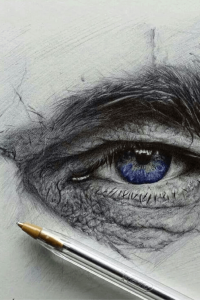
The color of a person's eyes doesn't tell us whether they are kind or cruel, an optimist or a pessimist. Often aspiring authors focus on the eyes more than anything else when describing characters. While this is a feature we notice (especially if a person has unusual, striking eyes), there are many other interesting facial features.
As an exercise, practice describing a character's face. Describe their mouth, nose, brow, chin and ears. Find a simile or metaphor for each (e.g. 'His mouth was a tight red knot.')
One way to make eye description more interesting is to make characters' eyes stand out in relation to character traits or other features:
2. Make characters' eyes contrasting or incongruous
People's appearances are often full of strange juxtapositions and contrasts. The man with the big, ruddy face might have small, delicate hands. One way to describe characters' eyes effectively is to use them to create contrast. For example, a character who has a nervous temperament could have an intense, penetrating stare that one wouldn't expect, given their nervous or avoidant behaviour. Or they might avoid eye contact altogether which can also be incongruous.
3. Use eye description to support story development
One reason descriptions of novel characters' eyes sometimes reads as cliché is because authors describe eyes apropos of nothing. 'She smiled and looked across at him with her emerald green eyes' reads a little awkwardly because the character's eye color is not particularly relevant. Drawing attention to it almost detracts from the key action here - the momentary connection between two characters.
However, you can use eye description effectively at key points of character development. For example, if a character witnesses a horrific scene, their eyes might seem vacant or otherwise haunted to passersby. In Dostoevsky's Crime and Punishment, when the protagonist Raskolnikov comes to see an elderly pawnbroker at an unusual time, unarranged, Dostoevksy describes the pawnbroker's eyes to reflect the changed conditions of their interaction and the woman's awareness of this:
'The door was as before opened a tiny crack, and again two sharp and suspicious eyes stared at him out of the darkness.' (Crime and Punishment, Chapter 7)
You could also use a character's poor vision or a visual impairment as a plot point: perhaps because your character, the witness, has poor vision, it's not clear if they were able to see the murderer properly.
Use adjectives that describe how a character's eyes look to support the tone and mood of a scene, drawing attention to story developments, as Dostoevsky does. Yet don't over-rely on adjectives to create character impressions. Let actions and words speak too.
4. Describe the eye area rather than just eye color
To avoid clichéd eye descriptions, instead of describing color describe the eye area. For example, if there are bags or dark circles underneath a character's eyes this conveys tiredness and/or anxiety. Eyes that are swollen, puffy or ringed with red indicate recent emotional distress. Narrowed eyes indicate hostility or suspicion. Half-closed eyes indicate drowsiness. Mischievous eyes can indicate a fun-loving person.
Describe the shape of the eye too: you could describe your character as having almond-shaped eyes, or hooded, or having a monolid (eyes that don't have a crease), wrinkled, makeup smudged creating a panda-like effect. Eyes wide open could indicate innocence or naivety. Eyes aflame with passion conveys an entirely different range of emotions or state of being too. Take note of how eyes change in dim light, with the pupil growing big. You could just simply use a medical condition to describe eyes for example ptosis, which is an excessively droopy eyelid.
When you get down to it, there are countless ways to describe eyes that show emotion and psychological state in addition to appearance. Make your eye descriptions do more work for your story.
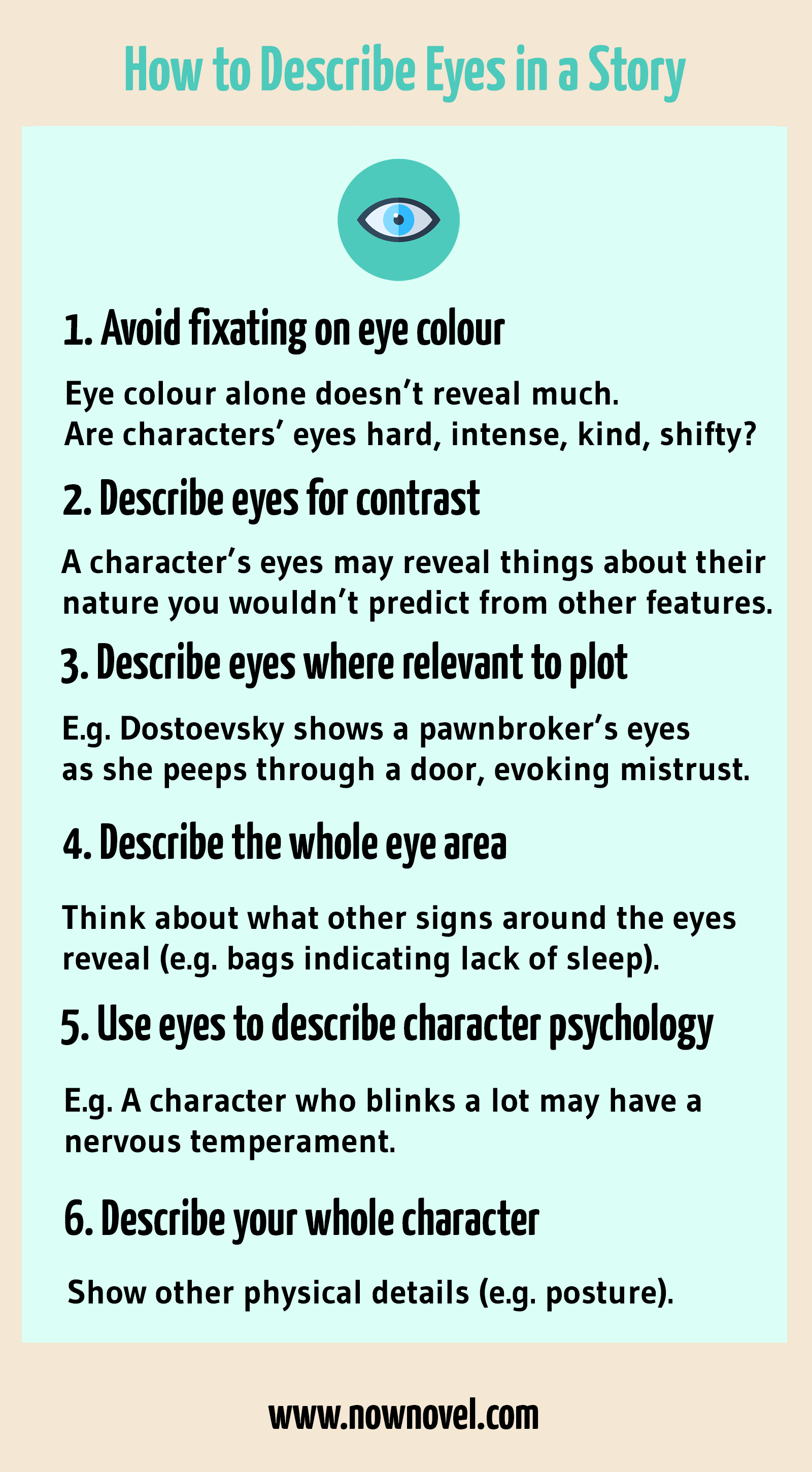
5. Use eyes to communicate psychology
To follow on from the above point, think about how your eye descriptions create impressions about your characters' temperaments and psychologies. For example, a character who blinks often might be a little nervous. On the other hand, a character who rolls her eyes often could be the cynical, 'so over it right now' teen. You could describe a compassionate person, let's say a psychologist, as having warm brown eyes, for instance that look at other characters with interest and care.
The important thing is not to overdo eye descriptions. If a character performs an eye movement such as rolling her eyes a few times it conveys her sarcastic nature. Yet if she does this every page, it can stale quickly. Use your discretion.
6. Read examples of great eye descriptions from books
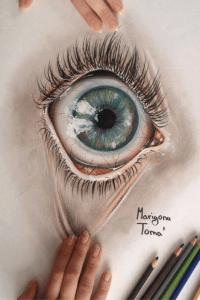
It's useful to keep a separate journal for character descriptions you love. That way, whenever you are trying to describe a character, you can page through effective descriptions and remind yourself what works.
Famous books are peppered with great eye descriptions. For example, in Crime and Punishment, Dostoevsky creates a suitably suspenseful and creepy tone when Raskolnikov's family come to visit him at his lodgings and are watched suspiciously by the landlady as they enter:
'[W]hen they reached the landlady's door on the fourth storey, they noticed that her door was a tiny crack open and that two keen black eyes were watching them from the darkness within.'
The description is simple yet effective. The adjective 'keen' comes before the color 'black', as it should, being the more descriptive and informative of the two.
Although it's not effective to simply describe eye color alone, many successful authors do describe eye color - even improbable colors as J.K. Rowling does when she describes the villain of Harry Potter, Lord Voldemort:
'[His face was] whiter than a skull, with wide, livid scarlet eyes and a nose that was as flat as a snake's with slits for nostrils'.
Rowling, like Dostoevsky, places the most important, emotion-conveying descriptor first. Even though Voldemort's eyes are 'scarlet', a non-standard eye color, they are first described as 'livid', conveying immense anger appropriate to a villain.
7. Move beyond describing eyes in your story
To truly describe characters brilliantly, describe aspects of your character that are most relevant to a given scene. For example, if a character is fleeing the scene of a crime, their eye color is scarcely relevant here. But describing their body language (as they attempt to slip past passersby unnoticed) or breathing can heighten tension.
As important as it is to know how to describe eyes in a story without using cliché, it's even more important to have rounded character description skills.


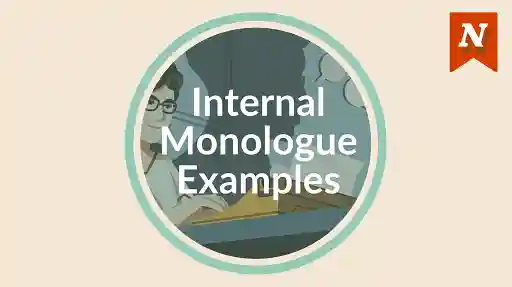



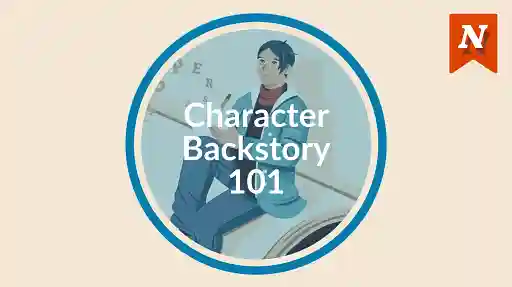



Good advice on what it is the character is looking at. I have told my listeners to do something similar in the past. Always describe what it is that the character's five senses are telling them. You don't have to use all of them and the sense of sight is a powerful one. Rick Dean/Poor Richard's Bloganac
Rick Dean - Almost 12 years ago
I agree. I think the idea of watching your metaphors is also a powerful one.
Jane - Almost 12 years ago
This is really nice!
James - Over 9 years ago
Thanks James!
Bridget At Now Novel - Over 9 years ago
I also have a tip. I noticed that a lot of people overuse the color of peoples eyes. They talk about how 'ocean blue they are' and always somehow worm the color of there 'dazzling eyes' into the chapter, which can be annoying, and feel a little unrealistic. It's okay for the character to recognize how strange or beautiful another character's eyes are, but not if it is all the time. It gets old and makes the story a little boring when all you know about the other character is the color of there eyes.
Katherine - Over 9 years ago
Completely agree with this, Katherine. Many writers use this in the attempt to create a sense of intimacy but it can be very cliched.
Bridget At Now Novel - Over 9 years ago
This is, hands down, the best information I've found on this subject! Re-Blogging on http:www.rijanks.wordpress.com
Jan Sikes - Over 8 years ago
Hi Jan - thank you so much, that's very kind. Will share your re-blog.
Bridget At Now Novel - Over 8 years ago
I like the ideas in this blog post. They're great.
Linda Sue Walker Fulton - Over 8 years ago
Thanks, Linda! Thank you for reading.
Bridget At Now Novel - Over 8 years ago
I want to describe a person, that can manipulate water or bend it. ( in other words, I want to describe a person with water powers.) But I don't know how to do it professionally and smoothly, since I am not aiming to write a little fairytale about a girl with magical powers, I am trying to make it descriptive and appropriately written out, which I am very much struggling to do. I am hoping you could help me out and give me suggestion, since your advice on how to describe this subject in writing really helped me, if any viewers can give me suggestion i would very, very much appreciate it to.
Prasha - Over 4 years ago
Hi Prasha, Happy New Year! Thank you for your question, it sounds an interesting character power. I would say try to focus on the exact, precise detail. For example, the visual qualities of the water (the droplets, the motion, the way it reflects the light), the way your character concentrates to manipulate it (or any specific words they say that are part of executing their power over water). Precise and specific details that describe the exact phenomena taking place will help to put your reader in the scene - movement, colour, sound. This is more impactful than, for example, if you were to just write 'She used her powers to summon water' as this relies more on broad, abstract ideas.
Jordan - Over 4 years ago
Literally never in all my years of trying to write have I seen something that is not only so in-depth as far as THE HOW of describing character features, but also expressed in a way that is completely tangible and digestible. This is essentially THE post I've been looking for. Outstanding. Thank you so much. -Billy
Billy Alarie - Over 4 years ago
Hi Billy, thank you! I'm glad you're finding our articles helpful and that this answered what you were looking for. Thanks for reading our blog and taking time to leave feedback.
Jordan - Over 4 years ago
I have a character in a book I am writing and I want to know if this is ok. "She looked over At Annika with deep blue eyes that reflected power and magic. Some people even say she was almost killed for that when she was born" (magic is outlawed)
Madelyn - Over 4 years ago
Hi Madelyn, thank you for sharing your extract from work in progress. There are good elements here. I would suggest finding phrases that tell (for example, '...that reflected power and magic...') and replacing them with words that show more (what is it about her eyes specifically that 'reflects power and magic'? Is it something eerie or unnatural/supernatural about their colour/shape/intensity/her stare? Keep going and good luck!
Jordan - Over 4 years ago